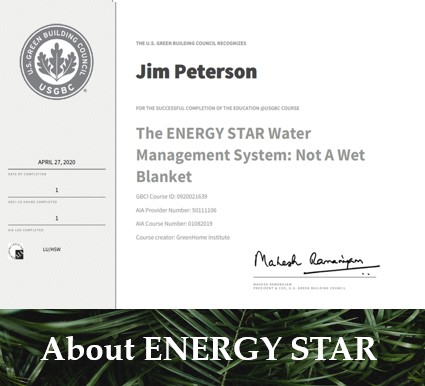
PROJECT DETAILS
In 1992 the US Environmental Protection Agency (EPA) introduced ENERGY STAR as a voluntary labeling program designed to identify and promote energy-efficient products to reduce greenhouse gas emissions. Computers and monitors were the first labeled products. By 2019, ENERGY STAR has helped American families and businesses save 5 trillion kilowatt-hours of electricity and avoid 4 billion metric tons of greenhouse gas reductions over the life of the program. In 2019 alone, ENERGY STAR and its partners helped Americans save nearly 500 billion kilowatt-hours of electricity.
By 2020, about 75,000 product models have earned the ENERGY STAR. Also, more than 3,000 builders, developers and manufactured housing plants are ENERGY STAR partners, including all of the nation’s twenty largest homebuilders. And by 2019 more than 2 million ENERGY STAR certified homes and apartments were built in the U.S. to date.
So, what is the ENERGY STAR label? The ENERGY STAR label is awarded to products for the home and office that are highly energy efficient. The program encourages the use of energy efficient products that both protect the environment and save consumers money. ENERGY STAR is the government backed symbol for energy efficiency, providing simple, credible, and unbiased information that consumers and businesses rely on to make well-informed decision.
ENERGY STAR
New homes or apartments that earn the ENERGY STAR label have been verified to meet energy efficiency requirements set by U.S. EPA. It has been reported that these ENERGY STAR certified homes are at least 10% more efficient than homes built to code and achieve a 20% improvement on average, while providing homeowners with better quality, performance, and comfort. A new tier of ENERGY STAR certification, called NexGen Certified Homes and Apartments, will be launched in 2023. This new certification uses a baseline of the ENERGY STAR Single-Family and Multifamily certification, with addition requirements such as heat pump water heaters and EV-ready charging capabilities.
For your existing building or home, a performance assessment that 1.Includes a discussion with you, the homeowner, to understand your living, uses and any problem areas you may have with comfort and energy concerns 2. A review of your previous energy bills and review of your traditional or historical uses in your home 3. Perform a visual inspection of the building envelope, exterior and interior along with your mechanical systems, 4. A diagnostic evaluation to establish moisture problems and identify any leaks or ventilation issues 5. Establish areas in need of ‘improvements’ that will benefit your home’s health and safety issues, energy efficiency issues, the comfort of all occupants and the cost associated with the improvements.
